Ford Falcon EB II - EL XR8 - Buyer's Guide



|
The biggest news with the arrival of the EB Falcon was the return of the V8 engine after a decade
Ford Australia in the early 1980s was famously blindsided in 1982 when it predicted the imminent death of V8 engines and of performance cars in general.
A decade after declaring Australian demand for V8 engines was dead, Ford acknowledged its error and again offered a V8 option to its EB Falcon range.
First word of a sporty Falcon came in 1991 with the addition of a 165kW S-XR8 Pack which was joined in 1992 by an S-XR6. The first stand-alone XR8s were the ED versions, released in 1993 and followed by a limited production (200 cars) Sprint that used the 192kW EB GT engine.

Basic EBII and ED XR8s developed just 4kW more than the cheaper XR6 but came with an exhaust note that the six-cylinder car couldn’t duplicate. The differential ratio was lowered to trigger improved mid-range acceleration, yet top speed was an achievable 215km/h.
Differentiating XR models from others in the ED range was the distinctive four-light nose and unobtrusive boot spoiler. Trim was boring but durable, with woven cloth on the seats and cabin plastics that seem to last longer than most before succumbing to fading and dash cracks.
| Read next: Ford Falcon EA-ED review

Loads of seat adjustment and a steering column that moved vertically would allow almost anyone to be comfortably seated in an XR8 for hours on end. That was particularly useful for those who frequently ran between major cities such as Sydney-Brisbane. With a 68-litre tank capacity and Highway Cycle consumption of 9.5L/100km, the trip could be completed with a single fuel stop and mid-point driver swap.
The updated EF launched in 1994 brought a longer nose, fluted bonnet and a miserable 3kW power increase. EFs were highlighted by restyled alloy wheels and an expanded colour range.
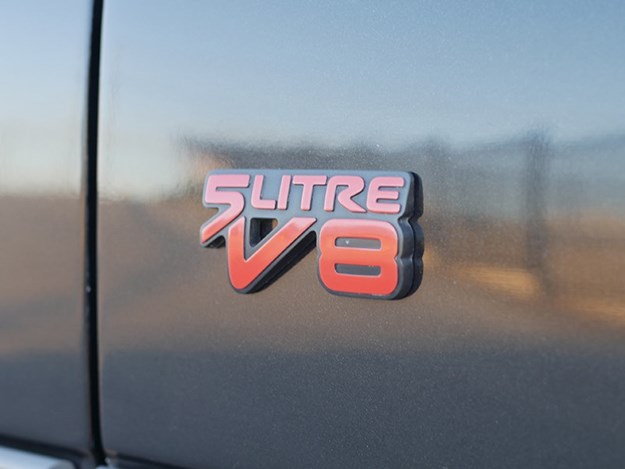
Ford claimed that EL versions sold from 1996-98 were quieter than any previous Falcon, due to additional sound deadening and improved construction procedures. Cars sold after October 1997 included air-conditioning and around 700 were fitted with 185kW engines. These cars also featured improved rear suspension geometry to reduce body roll.
Although at least 25 years old, these Falcons remain enjoyable and sufficiently competent to serve as everyday transport. They were the first Falcons with a driver-side airbag as standard and one for the passenger optional.
ABS brakes came standard too, but the braking system is an XR8 weakness and lots of owners have spent money on upgrades. Cars with upgraded, after-market brakes are worth having but don’t pay ridiculous money.
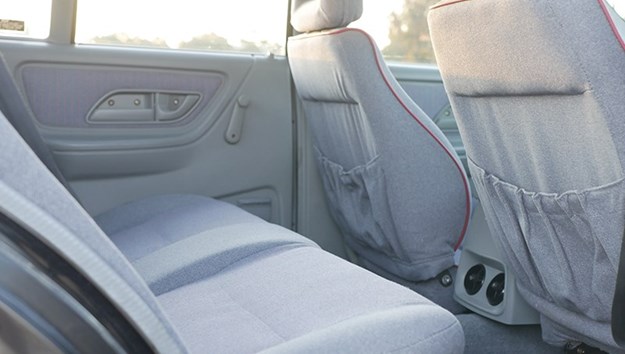
Sadly, lots of XR8s were seen as underpriced fodder for street racers to thrash and crash. Anything from minor body damage to a simple mechanical failure would see otherwise good cars scrapped without a second thought. Stocks available to the current market are restricted as a result.
With demand for good cars surging and value increases, buying with the future in mind has become important. The desirable cars are manual, with low kilometres in colours other than white or red. Be wary of the XR8 with cracked or poorly aligned bumpers which hint at more serious crash damage and possible consequences for suspension alignment.
Value range: Falcon (ED-EL manual)
Fair: $8500
Good: $18,000
Excellent: $27,500
(Note: exceptional cars will demand more)
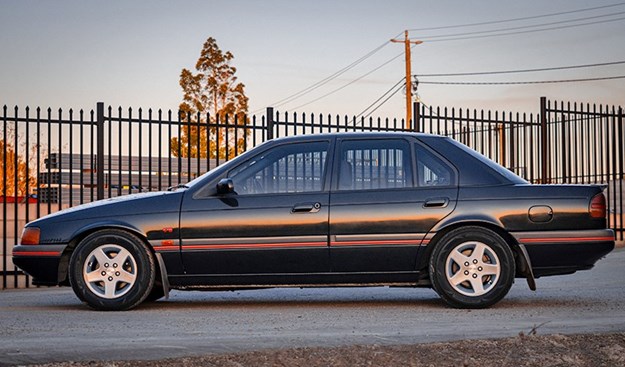
BUYER'S CHECKLIST
Body & chassis
1990s Falcons seem less prone than earlier ones to rust but still check windscreen and rear window surrounds, wheel arches, sills and door skins for rust or repairs. So many EB-ELs were sold that good used panels remain easy to find and cheap. Check the battery tray for corrosion. Broken locating clips on the bumper/airdam will result in rattles and uneven gaps. Boot seals leak, so check for dampness which can promote rust and affect operation of the rear lights. Replacement headlight panels in fibreglass cost $350-400 each, but new lights seem to no longer be available and used pairs are priced at around $400 each. Higher wattage bulbs will improve night vision but generate more heat and blow more often.
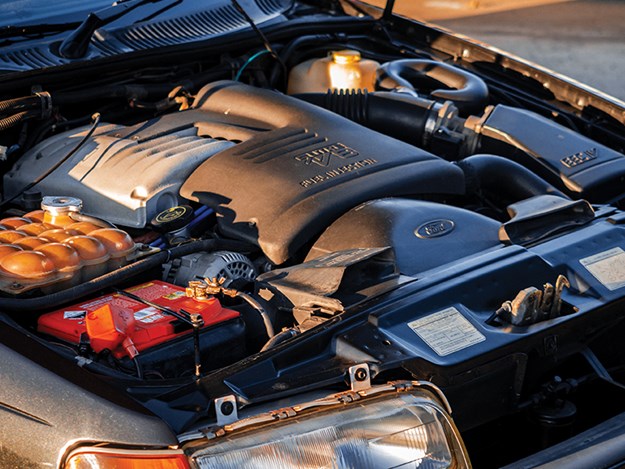
Engine & transmission
1990s Falcons seem less prone than earlier ones to rust but still check windscreen and rear window surrounds, wheel arches, sills and door skins for rust or repairs. So many EB-ELs were sold that good used panels remain easy to find and cheap. Check the battery tray for corrosion. Broken locating clips on the bumper/airdam will result in rattles and uneven gaps. Boot seals leak, so check for dampness which can promote rust and affect operation of the rear lights. Replacement headlight panels in fibreglass cost $350-400 each, but new lights seem to no longer be available and used pairs are priced at around $400 each. Higher wattage bulbs will improve night vision but generate more heat and blow more often.
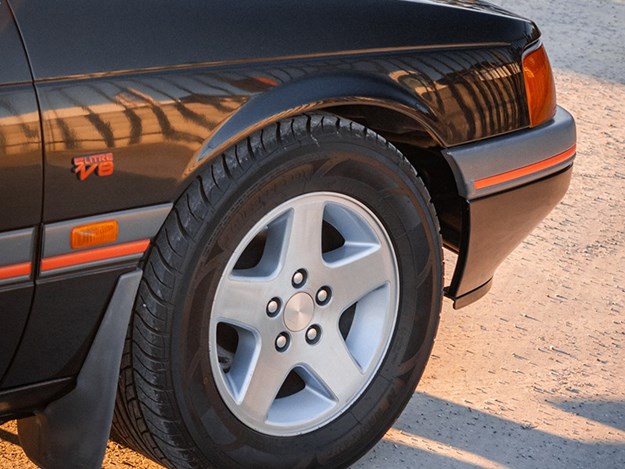
Suspension & brakes
Fitting a front-end Castor/Camber Kit allows longer control arms from the AU to be fitted with more scope for suspension adjustment and reduced tyre wear. Original brake rotors were too small for a car of the XR8’s weight and performance and will hopefully have been replaced by better quality items that are less prone to warping and premature wear. When test driving an XR8, find a stretch of quiet road to test the ABS. Look carefully at the alloy wheels for cracks, especially to the inner edges. Cars that have been retro-fitted with bigger diameter wheels and lower-profile tyres will deliver a harsh ride unless the springs and suspension bushes have also been replaced.
.jpg)
Interior & electrics
Fords of this age feature the frustratingly unreliable Smartlock central locking system. Doors might not lock at all, stay locked when they should be open or even unlock themselves as you are walking away from the car. Some cars had complete system replacements under warranty and the problems recurred. Seat frames can bend or crack under the weight of hefty occupants and original seat belts will by now be needing replacement. Air-conditioners need to be tested as they can swallow $2500 if needing major repair. Lucky buyers may find a car with the trip computer and cruise control still functioning.
1992 - 1998 Ford Falcon EB II-EL XR8 specs
Number Built: 882 EBII, 882 ED (plus 354 ER8 Sprint), 882 EF1, 995 EFII, 784 EL, 824 ELII
Body: Steel, integrated body/chassis, four-door sedan & station wagon
Engine: 4942cc V8 with overhead valves and fuel injection
Power & torque: 165kW @ 4500rpm, 388kW @ 3000rpm (ED)
Performance: 0-100km/h 8.1 seconds, 0-400 metres 15.9 seconds (ED manual)
Transmission: Five-speed manual, four-speed automatic
Suspension: Independent with coil springs, struts, wishbones anti-roll bar (f) live axle with coil springs, locating links and shock absorbers (r)
Brakes: Disc (f) disc (r) power assisted with ABS
Tyres: 205/65 R15 radial
From Unique Cars #473 Dec 2022/Jan 2023
Unique Cars magazine Value Guides
Sell your car for free right here
Get your monthly fix of news, reviews and stories on the greatest cars and minds in the automotive world.
Subscribe

.jpg)

![2005 FORD FALCON BF XR8 Sedan 4dr Spts Auto 6sp, 5.4i [Oct]](http://assets.primecreative.com.au/imagegen/cr/100/75/assets/momoads/2024/08/20/231723/307_1.jpg)












